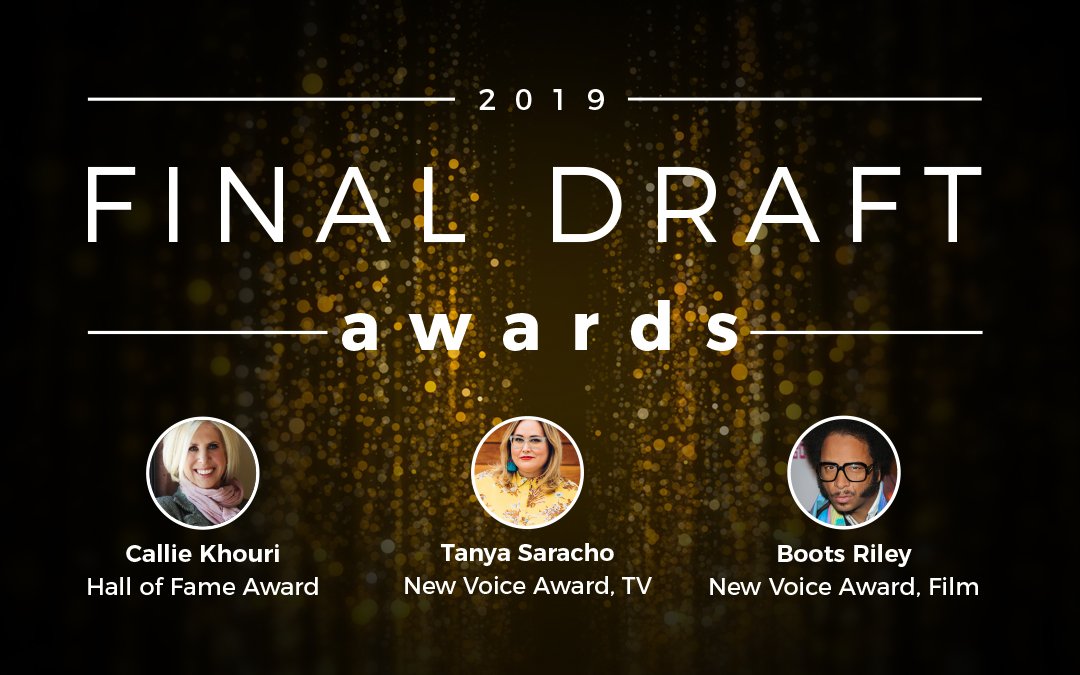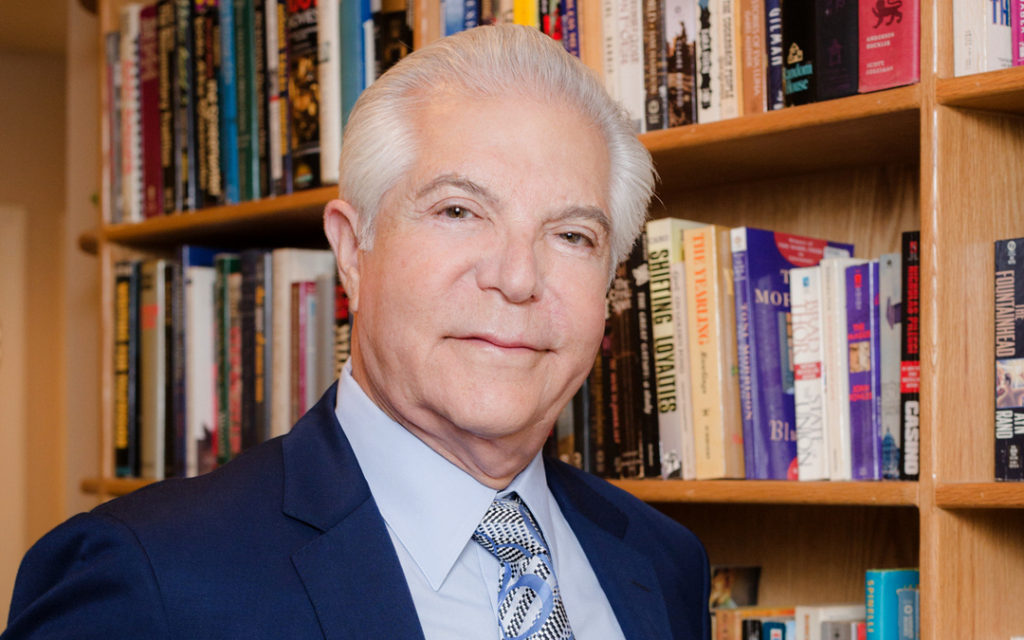NALIP'S #WeAreInclusion Initiative: Writer-Director Nancy Mejia
April 30, 2018
For nearly 20 years, the National Association of Latino Independent Producers (NALIP) has advocated for the discovery and inclusion of Latino voices in the media. In support of their mission, NALIP began the #WeAreInclusion project, showcasing the varied stories of some of their members.
One such featured artist is Nancy Mejia, a rising filmmaker and a Los Angeles native with Salvadoran roots. An AFI Directing Workshop for Women Fellow and the writer/director of short film Mateo, Mejia was staffed this year on her first television show, Starz network’s Vida. Recently, she shared with us some of her experiences in the industry as a filmmaker in general and as a member of underrepresented communities.FD: What is your connection with NALIP? How did you find out about it and get involved?
In 2015, I met a NALIP member named Maria Augi Carter. We were both fellows of the Latino Screenwriting Project. She recommended I attend the upcoming NALIP summit in Los Angeles. At the time, I was on a very tight budget and couldn’t afford the summit pass. So, I decided to volunteer.
During that week, I was able to meet other members, familiarize myself with NALIP leadership, and learn more about networking and collaborative opportunities. Since then, NALIP has been instrumental in supporting the start of my career.
FD: Tell us a little about NALIP’s #WeAreInclusion initiative.
NALIP’s #WeAreInclusion initiative is a grassroots movement to discover, support and promote the voices, works of Latinx creators both in front and behind the camera. It’s about celebrating the spectrum of our community’s identity and inspiring us to proactively take control of our narratives. As a queer woman of color, I interpret the #WeAreInclusion initiative as a tool of empowerment and an attempt to remedy the lack of authentic representation in media.
FD: Tell us about your industry background. What drew you to film? To writing and directing, specifically?
My earliest memories are connected to artistic expression. I always had a passion for reimagining my surroundings and storytelling, but I never connected those creative impulses as credible pathways toward a professional career. I didn’t go to film school, but I watched a ton of films during my undergrad years.
After college, I sought work as a PA to get my foot in the door. The work wasn’t nourishing. However, it did help demystify the process and ease the intimidation I previously had about the craft of filmmaking. More importantly, I met awesome people who would become future collaborators. Film, as a medium, allowed me to fuse and coalesce all the different elements I’m creatively stimulated by such as literature, music, and visual composition.
For me, writing and directing are intrinsically connected. By the time I write an outline, scene heading, or line of dialogue, I’ve visualized the world over and over again. It’s like a repetitive daydreaming flow. I have to feel it in my bones. It makes for a time-consuming writing process, but it’s what comes naturally to me and makes me feel most connected to the material. Obviously, the opportunities to practice the art of directing are scarce compared to those for writing, so I try to leverage my writing to attract directing prospects.
FD: What brought you to the story of your short film Mateo? It feels like it could be a longer film or series. Do you have a larger story in mind, or is it complete as a short?
Mateo is a project I always remember with fondness. The development of this short was very organic. My wife was teaching a high school drama class, and she couldn’t find scenes or monologues that her students found relevant to their experiences. She asked me to write a series of monologues. Mateo, initially, was one of those monologues. The main character’s voiceover was an excerpt from the monologue. It was also inspired by my own experiences as a former teacher.
I shared the monologue with a friend, Trenton Waterson, who I met during my PA days. He previously produced a few projects and graciously offered to produce Mateo. I immediately jumped at the chance to direct my first short.
The narrative of Mateo as a short is complete. However, the essence of the main character lives in many other incarnations of characters I intend to bring to life.
FD: Your involvement with NALIP helped get you staffed on a Starz show – congratulations. How did NALIP help pave the way?
Thank you. The show is a new half-hour drama called Vida. (It premieres May 6.) Tanya Saracho (showrunner/creator) was on the hunt for Latinx writers because she wanted her room to reflect the world of the show. She reached out to NALIP in order to read writers who are not typically represented by agencies and may have a narrow possibility of having their work reach the desks of industry gatekeepers.
Thankfully, my original pilot script was among the list of qualified candidates Ben Lopez (Executive Director of NALIP) submitted for Tanya’s consideration. The next step was an interview with her, followed by another interview with executives at Starz. It was an unexpected opportunity.
Even though I desperately needed the gig, I did my best to be present and clearly articulate my intentions as a storyteller. I’m grateful to NALIP for championing my potential and to Tanya Saracho for giving me my first TV credit as a staff writer.
FD: What upcoming projects are you working on?
I just completed my latest short film, Dark Wolf Gang, as part of the AFI Directing Workshop for Women. It’s based on a supernatural comedy pilot I co-wrote with my friend and talented writer Susie Lohse. Dark Wolf Gang is about a Latino teen skater from Los Angeles who discovers he’s destined to become a powerful witch doctor.
Our hope is to attract the attention of folks interested in developing a series that highlights an American Latino family on screen, in which the driving thematic issues are not cliché. People of color are rarely protagonists in supernatural, fantasy narratives.
FD: There is a lot of debate about the lack of representation in the media. In terms of solutions, what do you see as the most practical first step in getting more access for industry Latinos, both on and off the camera? How does NALIP contribute to this cause?
Portrayals in media matter because they frame perception. Ultimately, I think it’s the responsibility of creators to be mindful when we create content, and executives to be mindful when they hire. When I’ve observed acts of exclusion, the offenders are usually not coming from a place of malice, but a place of ignoring and disregarding their own privilege. We all wield some kind of privilege, whether it’s rooted in our socio-economic status, cultural capital, race, gender identity, and language. We all can afford to name and rectify our own prejudices.
Also, sometimes the lack of inclusion is due to apathy or laziness. Folks want to reach for the low-hanging fruit instead of doing their due diligence and searching for creators who may be on the margins.
For me, the most practical step is to look inwardly at our own work as writers, directors, producers, actors, agents, managers, executives, and identify our shortcomings in allowing fair access to not only Latinx communities but any community traditionally marginalized by the industry.
NALIP contributes to the cause of inclusion by facilitating windows of opportunities for its members to create and share their work. NALIP coordinates several networking events trying to connect storytellers with those with the platform to amplify those stories. Basically, NALIP strives to point us in the right direction. It’s up to us to be ready and firmly take the next step.
FD: Any advice for struggling writers and directors, especially those coming from traditionally underrepresented communities?
If you’re a writer, write. If you’re a director, direct. Endeavor to have the discipline to steadily accumulate a collection of work that represents your artistic voice. Do not follow trends; there are other folks whose job that is — follow your gut.
You never know when you’ll get that call or e-mail requesting samples of your work. It’s so demoralizing, disheartening when you receive the call and you have nothing to offer. I know the journey can be difficult and, at times, it demands sacrifices that we may not afford. Don’t be afraid or ashamed to ask for help.
Written by: Asmara Bhattacharya
Asmara Bhattacharya is a produced screenwriter/playwright, script reader, and festival screener, with multiple placements at Final Draft, Nicholl, Austin Film Festival, and other competitions. A trusted sounding board and consultant for industry professionals, dedicated fans also caught her in “Independence Day: Resurgence” and NBC’s “The Night Shift” – for one glorious half-second each. More can be found on her website: www.dickflicks.net or follow her on Twitter @hotpinkstreak


